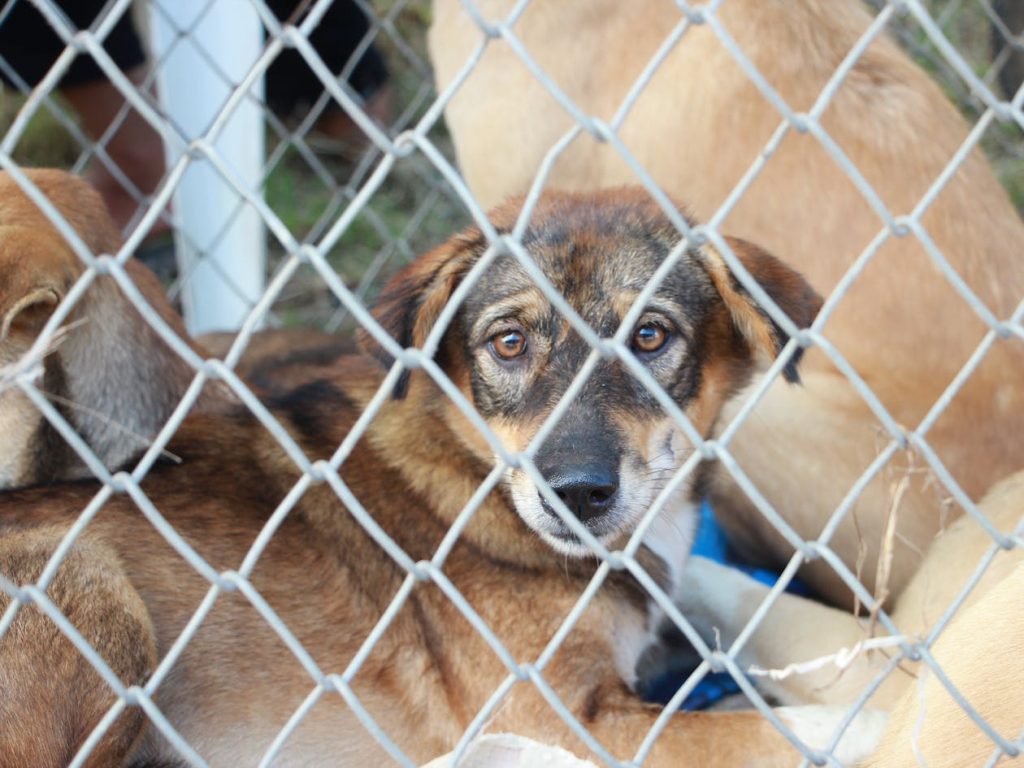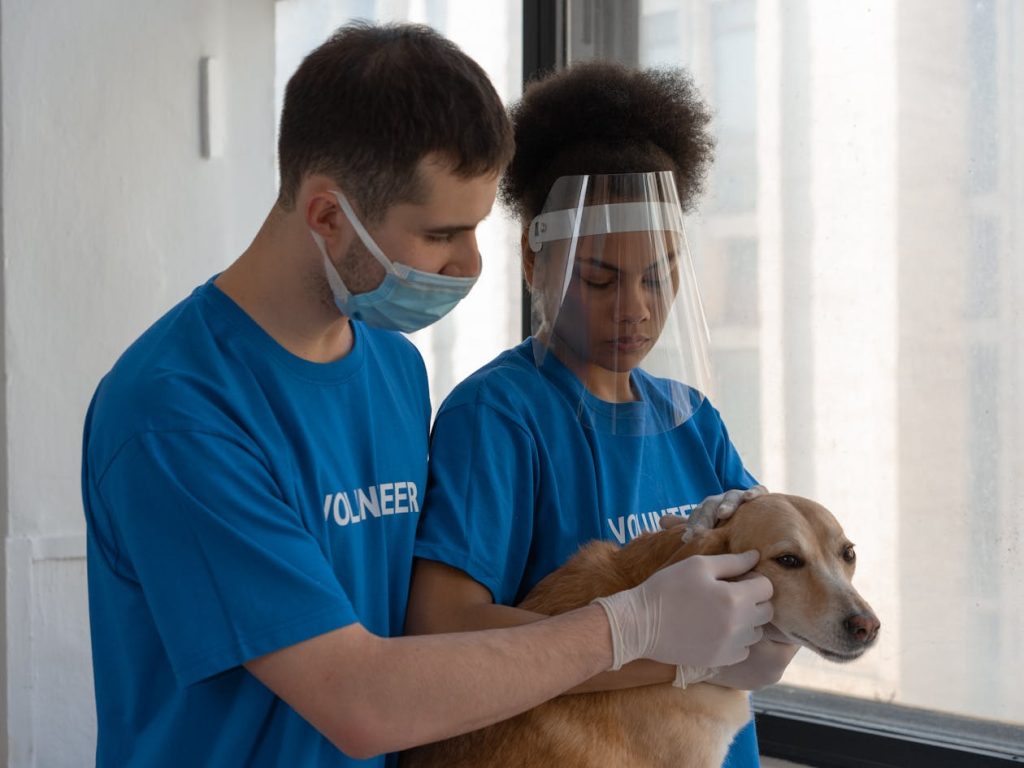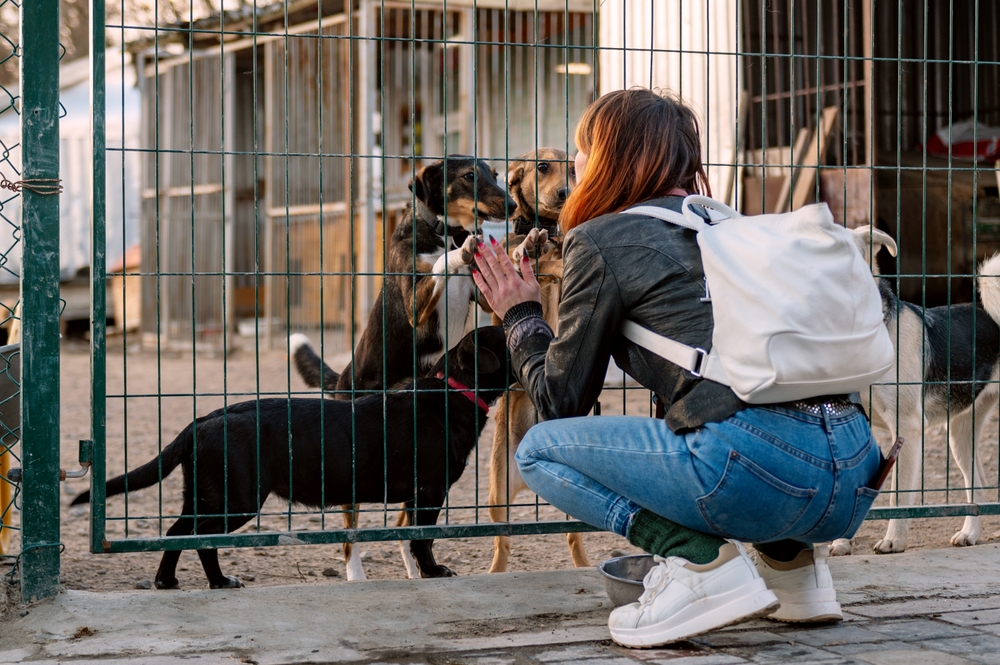Your cart is currently empty!
Millions of Animals Are Stuck in Shelters Because Their Owners Struggle to Pay Rising Vet Bills

Rocky stood in his cage, gray muzzle pressed against the bars, watching strangers pass by. At 11 years old, after a lifetime in one home, he’d become a number—the 1,000th animal crowding New York City’s largest shelter system. His owner hadn’t stopped loving him. They just couldn’t afford him anymore.
Across America, a silent crisis unfolds behind shelter doors. Families arrive clutching leashes and carrier boxes, tears streaming down faces as they hand over pets they can no longer keep. Not because they want to, but because choosing between veterinary care and electricity bills leaves no real choice at all.
Rocky Becomes Number 1,000

Animal Care Centers of New York City made an unprecedented announcement on July 18: they would stop accepting animals except in emergencies. Rocky, the senior dog who pushed them past capacity, received VIP treatment in a side office while hundreds of other dogs were packed into quarters never designed for such overflow.
Three shelters across the city had reached their absolute limit. Cages lined the hallways. Dogs shared spaces meant for one. Staff members worked overtime trying to manage the chaos while maintaining humane conditions for every animal.
Even after declaring the intake suspension, exceptions poured in. Within days, 200 more animals arrived—public safety risks or transfers from city agencies that couldn’t be refused. Each new arrival meant less space, fewer resources, and harder decisions about who might face euthanasia if adoptions didn’t increase.
America’s Shelters Hit Breaking Point
Nationwide, 5.8 million animals filled shelter facilities last year, according to Shelter Animals Count’s national database. While intakes decreased 1% from 2023 to 2024, the numbers remain staggering. More concerning: adoption rates continue falling.
In 2019, 55% of shelter dogs found homes or returned to their owners. By 2024, that number dropped to 50%. Behind that 5% decline lies a harsh reality—334,000 dogs euthanized last year alone, healthy animals whose only crime was arriving when shelters had no space left.
“It’s been a tough several years for animal shelters,” said Tori Fugate, communications director for Shelter Animals Count. Facilities designed for temporary stays now house animals for months, sometimes over a year, waiting for families that never come.
Arizona shelters find pets abandoned in parking lots and desert roadsides. Virginia facilities blast social media with emergency adoption pleas. Tennessee shelters describe themselves as “drowning,” stacking kennels atop kennels to create vertical space where floor space ran out.
Pet Care Costs Explode Beyond Reach

Bank of America Institute data reveals the crushing financial reality behind surrender statistics. Since 2019, veterinary care and grooming prices have jumped 42%. Pet food and supplies surged 22%. A routine vet visit that cost $200 five years ago now exceeds $300. Emergency surgery that might have cost $2,000 can reach $5,000 or more.
Pet insurance, marketed as the solution, remains a luxury many cannot afford. Monthly premiums for comprehensive coverage often exceed $100 for dogs, with deductibles and co-pays still leaving owners with substantial bills. Many discover pre-existing conditions aren’t covered, only after their pet falls ill.
Card spending at pet stores dropped 4% from April 2024 to this April. Veterinary spending fell 1% during the same period, not because pets need less care, but because owners skip checkups, delay treatments, and hope problems resolve themselves. When they don’t, shelters become the last resort.
“I Can’t Afford It” – Heartbreak at Surrender Desks
“The main reason for pet surrender is, ‘I can’t afford it.’ Vet care is expensive, food is expensive, I mean, just human cost of living is expensive,” explained Risa Weinstock, President and CEO of Animal Care Centers of NYC.
Shelter intake coordinators witness the same scene daily: parents trying to stay strong while children sob, elderly owners giving up companions they’ve had for decades, and young adults who adopted during pandemic lockdowns now facing financial reality. Each surrender form tells a story of love interrupted by economics.
One family arrived with their golden retriever after receiving a $3,000 estimate for hip surgery. Another brought their diabetic cat when insulin costs exceeded their grocery budget. A senior citizen on fixed income surrendered her Yorkshire terrier when dental work quotes reached $1,500.
These aren’t people who view pets as disposable. They’re families making impossible calculations, choosing between keeping their pet and keeping their home, between animal medication and human medication, between pet food and their children’s needs.
Shelters Scramble to Stop Surrenders

Recognizing that prevention costs less than care, shelters nationwide launch intervention programs. ACC provides free food pantries, vaccine clinics, and veterinary vouchers—anything to keep pets home.
“Even if it’s just one animal, one person’s dog, who we said, ‘If we give you food for a month and you can pay your electricity, would that help you take your dog or your cat or your rabbit home?’ and they say yes, and they walk off with their kids and they’re crying because we were able to keep that pet with them, that’s a good day,” Weinstock shared.
Some shelters partner with veterinary schools for low-cost clinics. Others negotiate payment plans with local vets. Food banks now stock pet supplies alongside human groceries. Community refrigerators include cat food. Churches organize pet food drives.
Yet these Band-Aid solutions can’t heal the underlying wound. For every family helped, five more arrive at shelter doors. For every pet kept home with temporary assistance, another loses that battle when emergency strikes.
Animals Waiting Longer Than Ever
Time stretches differently in shelter cages. What starts as “just a few days” becomes weeks, then months. Some animals mark their first birthday behind bars. Others grow old waiting for homes that never materialize.
Long-term residents develop behavioral issues—anxiety, aggression, depression—that make adoption even less likely. Cats stop eating. Dogs pace endlessly. Rabbits pull out their fur.
Staff members become attached to long-termers, celebrating small victories like successful walks or positive meet-and-greets with potential adopters. They create social media campaigns highlighting individual personalities, hoping the right photo or video might catch someone’s attention. Marketing budgets stretch to promote harder-to-place animals—seniors, those with medical needs, and breeds facing stigma.
Desperate Measures Across America

Creativity born from desperation emerges nationwide. Shelters waive adoption fees, host mega-adoption events, and partner with pet stores for satellite adoption centers. Some offer “foster-to-adopt” programs, letting families trial pets before committing. Others provide “seniors for seniors” discounts, matching older pets with older adults.
Mobile adoption vans visit neighborhoods, bringing animals directly to potential homes. Virtual meet-and-greets accommodate busy schedules. Social media influencers promote shelter pets to millions of followers. Dating apps partner with shelters, adding “adopt together” options to profiles.
Still, intake numbers climb faster than adoption rates. Rural shelters transport animals to urban areas with higher adoption demand. Urban shelters send overflow to rural facilities with more space. This shell game of shuffling animals between facilities buys time but doesn’t solve the fundamental problem.
Government Steps In – But Is It Enough?
Friday brought news that New York City would invest $1 million into ACC. Mayor Eric Adams, facing re-election, announced funding for 14 new staff positions and operational support. “In so many ways, our pets care for us and our loved ones, and it’s important that we care for them, too,” Adams stated.
Critics argue $1 million barely scratches the surface. Fourteen staff members across three facilities handling 1,000-plus animals amounts to roughly one new employee per 70 animals. Operating costs for a single shelter can exceed $1 million annually. This emergency funding provides breathing room, not long-term solutions.
Other cities watch New York’s response, weighing their intervention options. Los Angeles increases shelter budgets. Chicago explores public-private partnerships. Houston considers bond measures for new facilities. Yet addressing symptoms without treating causes means the crisis continues.
How Communities Can Help Right Now

Foster families provide crucial overflow capacity, giving shelters breathing room while socializing animals for eventual adoption.
Donations—monetary or supplies—stretch limited budgets. Volunteers walk dogs, socialize cats, clean cages, and free staff for specialized care. Social media sharing expands reach beyond traditional adoption networks. Professional services—photographers, groomers, trainers—donated pro bono to improve adoption chances.
Corporate partnerships emerge as unexpected allies. Pet stores host adoption events. Breweries organize “yappy hours.” Gyms offer “workout with dogs” sessions. Real estate agents include shelter information in welcome packages for new homeowners.
Euthanasia: The Last, Last, Last Choice
Behind closed doors, shelter workers make decisions no one should face. Which animals receive scarce medical resources? Who gets the last open kennel? When does quality of life outweigh quantity?
Weinstock emphasized euthanasia remains the “last, last, last choice.” Healthy animals with good temperaments stay indefinitely, hoping for adoption miracles. Only aggressive animals posing safety risks or those suffering medical conditions face end-of-life decisions.
Still, 334,000 euthanized dogs represent 334,000 failures—not of shelters, but of systems that created impossible situations. Each injection carries weight. Staff members burn out, leave the field, and struggle with depression. Compassion fatigue spreads through facilities like an infectious disease.
The Uncomfortable Truth

Behind every surrender lies a broken system where pet ownership becomes a luxury rather than accessible companionship. Where medical care for animals mirrors America’s human healthcare crisis, available to those who can afford it, devastating to those who cannot.
Solutions require addressing root causes: housing policies that ban pets, pushing renters to choose between homes and companions. Wage stagnation hasn’t kept pace with inflation. Veterinary care consolidation is driving prices higher. Insurance companies are prioritizing profits over coverage.
Until systemic change arrives, shelters remain safety nets with too many holes. Rocky waits in his cage, hoping someone sees past his gray muzzle to the loyal companion within. Across America, millions more wait alongside him, casualties of an economic equation where love alone isn’t enough anymore.
